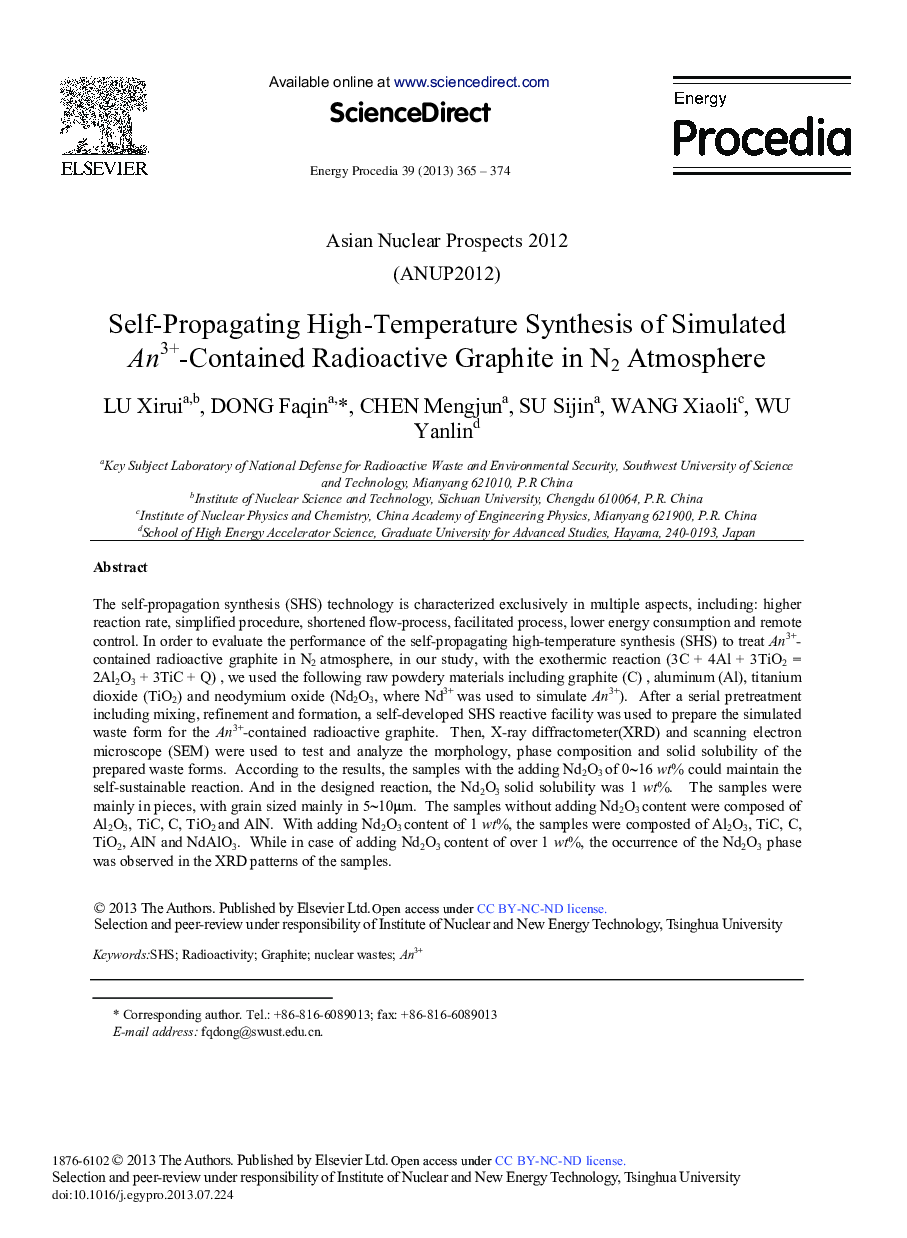| Article ID | Journal | Published Year | Pages | File Type |
|---|---|---|---|---|
| 1512403 | Energy Procedia | 2013 | 10 Pages |
The self-propagation synthesis (SHS) technology is characterized exclusively in multiple aspects, including: higher reaction rate, simplified procedure, shortened flow-process, facilitated process, lower energy consumption and remote control. In order to evaluate the performance of the self-propagating high-temperature synthesis (SHS) to treat An3+- contained radioactive graphite in N2 atmosphere, in our study, with the exothermic reaction (3C + 4Al + 3TiO2 = 2Al2O3 + 3TiC + Q), we used the following raw powdery materials including graphite (C), aluminum (Al), titanium dioxide (TiO2) and neodymium oxide (Nd2O3, where Nd3+ was used to simulate An3+). After a serial pretreatment including mixing, refinement and formation, a self-developed SHS reactive facility was used to prepare the simulated waste form for the An3+-contained radioactive graphite. Then, X-ray diffractometer(XRD) and scanning electron microscope (SEM) were used to test and analyze the morphology, phase composition and solid solubility of the prepared waste forms. According to the results, the samples with the adding Nd2O3 of 0∼16 wt% could maintain the self-sustainable reaction. And in the designed reaction, the Nd2O3 solid solubility was 1 wt%. The samples were mainly in pieces, with grain sized mainly in 5∼10 μm. The samples without adding Nd2O3 content were composed of Al2O3, TiC, C, TiO2 and AlN. With adding Nd2O3 content of 1 wt%, the samples were composted of Al2O3, TiC, C, TiO2, AlN and NdAlO3. While in case of adding Nd2O3 content of over 1 wt%, the occurrence of the Nd2O3 phase was observed in the XRD patterns of the samples.
